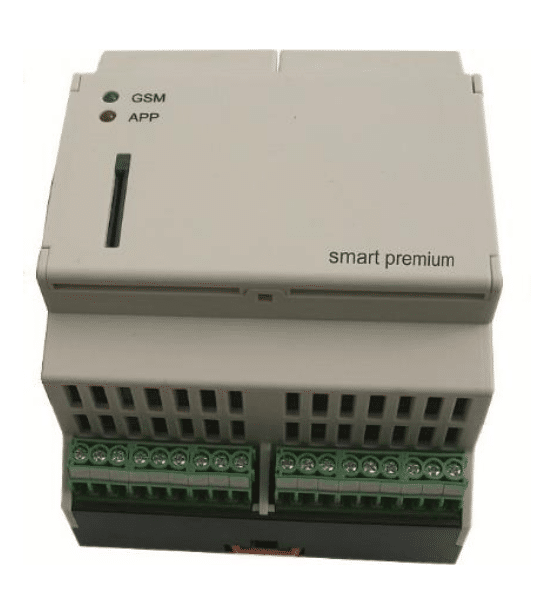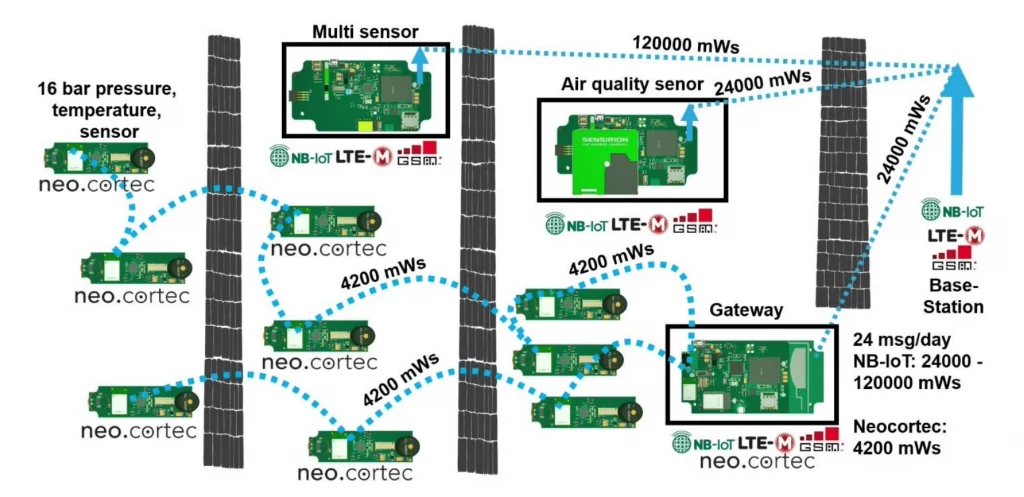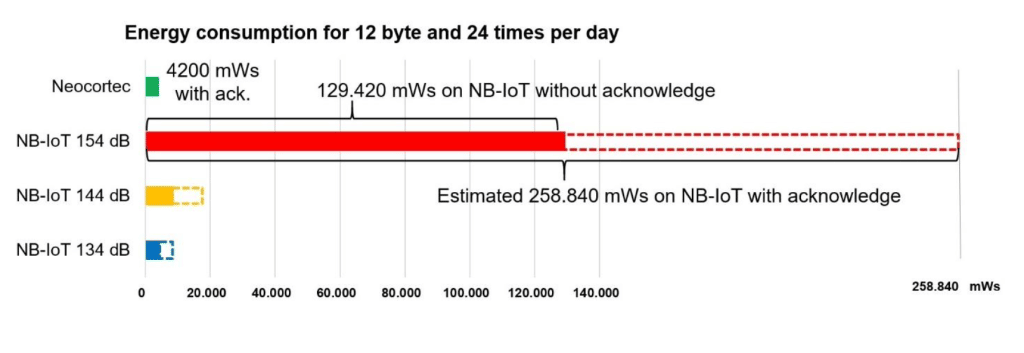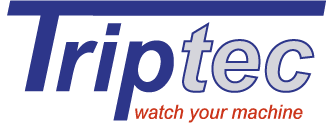
The widespread uptake of Industry 4.0 and smart environments (cities, factories and workplaces) requires wireless IoT devices that can collect and transmit data to a central location for assessment and possible corrective action. German monitoring company, Triptec, was relying on GSM/GPRS modules to send messages or receive control commands at the remotely located equipment. Then countries started to turn off 2G and 3G, plus lower power solutions were required to enable new applications. Triptec turned to Danish ultra-low power wireless mesh networking company, NeoCortec to find the solution.
Triptec HL UG traces its history back to 1992 and operates thousands of operation hour meters data loggers and fault indicators via cloud-based servers. Customers include public utilities, municipalities, industrial companies and energy utilities which use wireless IoT devices to monitor and optimize the operation of wastewater plants, district heating power plants and other vital equipment. Meters are used to record machine use and determine any necessary maintenance. Data loggers collect measurement data and transmit it at regular intervals to the cloud. Fault indicators monitor measured variables and trigger an alarm if a fault occurs. Often, fault indicators and data logger are used in combination.
Until recently Triptec had used GSM/GPRS modules to send messages or receive control commands at the units. However, 2G and 3G networks are being switched off across Europe, and to date, none of the three German network operators can promise how long GSM will continue to operate in the country. Triptec therefore needed a future-proof radio technology to ensure that its products and services remained operational. Triptec also wanted to use the redesign forced upon it to reduce the energy consumption of its wireless IoT devices in order to reach new market segments.

A sub-GHz NeoCortec NeoMesh implementation with NB-IoT/LTE-M cellular radio module
NB-IoT (Narrow Band IoT) and LTE-M (Long Term Evolution for Machine) are two relatively new Low Power Wide Area (LPWA) technologies. Unlike GSM, they were specified from the outset for low-power data communications. NB-IoT and LTE-M offer up to 20 dB more link budget than the previously used GPRS. 8 dB corresponds approximately to a doubling of the range, or alternatively, roughly the attenuation of a wall in a building. Therefore, with 20 dB the user can penetrate two more walls or provide better coverage further inside the building.
The timing signals used by NB-IoT and LTE-M systems allow Triptec to provide its IoT devices with bidirectional connection. Therefore, Triptec operation hour meters, dataloggers and fault indicators can access the cellular channel periodically as required by the application – every minute, once a day or as demanded – to check if a message has arrived. The device can go to sleep and still remain logged in. In the event of a fault, the cellular radio module specified by Triptec – in this case a BG95 from Quectel – is woken up. Energy is saved both in sleep mode and because there is no need to log on to the cellular network again.
The low-power mobile technology NB-IoT/LTE-M has been complemented with a sub-GHz mesh net from NeoCortec called NeoMesh. NeoCortec drastically reduces energy consumption per node through extremely precise timing. Instead of transmitting 1 to 3 km to a cell tower, the NeoMesh transmits indoors up to about 100 metres. Outdoors, 500 metres and more are possible. Each node in the NeoMesh is also a router. A message hops from radio node to radio node within the NeoMesh installation, and each message is acknowledged by the next node. In the event of a failure, an alarm is transmitted. Should a node fail, the module in the NeoMesh automatically searches for a new path or frequency hopping to another channel. All nodes synchronize every 1 to 30 seconds. With a cycle of 30 seconds, a node can operate for up to seven years powered only by two alkaline AA cells.

An NB-IoT/-LTE device needs approximately 5,200 mWs to send a long range message to a base station (154dB link budget). At this specification, one message per hour, without acknowledgement, would consume between 24,000 to 124,800 mWs per day, depending on the link budget. With acknowledgements, about twice the amount of energy is consumed. In contrast, NeoCortec’s NeoMesh installation requires just 4,200 mWs for the 24 messages, including acknowledgement.
Triptec’s 5G gateway (backwards compatible with 4G and 2G) is an edge computing device. The MCU is woken up every 30 seconds by the NeoCortec module, writes the measured value into the memory and makes a target/actual comparison. If a limit value is exceeded, the Quectel BG95 is woken up and a message is transmitted to the server within 2-10s. Since the fault message is the exception, the gateway is mostly asleep only transmits data to the cloud once or twice a day as desired.

Explains Wilhelm Oelers, CTO of Triptec: “We compared the well-known Mesh-Net protocols and found that most of them do not support sub-GHz operation. Additionally, with BLE-Mesh, ZigBee, Thread or 6LoWAN, the router and the gateway module are not allowed to go into sleep mode. In contrast, NeoMesh from Neocortec uses sub-GHz frequencies which enables good penetration of the signals through walls, and all elements – gateway, router, node – can go into sleep mode at the same time. This means that the system can operate using just two AA cells for years.
“Therefore, NeoCortec’s NeoMesh meets Triptec’s customers’ requirement for minimum energy consumption and a good range. Also, by operating in the license-free 868/915 MHz band, our customers do not have to pay for a SIM card. That is a substantial saving when installations could require 50 to 1000 SIM cards.”
Oelers concludes: “In a parking garage there are no sensors below the third sub-terranean level. NeoMesh can stretch this far; it can also penetrate deeply into the subsoil, so it is no longer a challenge to fit monitors even into a sewer. Thanks to the combination of NB-IoT / LTE-M and NeoMesh there are no more dead spots for Triptec.”
Conclusion
The ability to run future-proofed, wireless mesh networks on batteries for several years with low installation and operating costs is opening up new markets for Triptec. At the same time, the environment is protected from unnecessary battery replacement. NeoCortec’s NeoMesh networks can be expanded very quickly and inexpensively with additional nodes to measure new variables, making it a very versatile, as well as ultra-low power solution.

